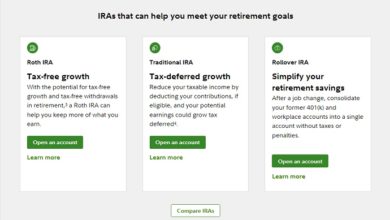
Covered options trading is a nuanced and strategic approach within the realm of financial markets, blending elements of stock ownership with call option selling to create a versatile investment strategy. This method is often employed by investors seeking a balance between generating a steady income stream and managing risks associated with options trading.
At its core, covered options trading involves two fundamental components: owning the underlying asset and simultaneously selling call options on that asset. The term “covered” arises from the fact that the investor possesses the actual asset, serving as a safeguard or coverage for potential obligations linked to the options contracts. Let’s delve deeper into the key aspects of this sophisticated strategy.
Ownership of the Underlying Asset
The foundation of covered options trading lies in the ownership of the underlying asset. This could be stocks, ETFs, or any other asset with associated options. By owning the asset, the investor ensures that they can fulfill any contractual obligations that may arise from the options they sell.
Simultaneous Call Option Selling
In conjunction with owning the underlying asset, the investor engages in selling call options. Call options grant the buyer the right to purchase the underlying asset at a predetermined price (strike price) within a specified timeframe. By selling these call options, the investor receives a premium from the buyer, thereby initiating the income-generating aspect of the strategy.
Covered Position for Risk Mitigation
The crux of covered options trading lies in maintaining a covered position. Since the investor already possesses the underlying asset, they can “cover” any potential obligations associated with the sold call options. In the event that the options are exercised, the investor can fulfill the contract by delivering the owned asset at the agreed-upon strike price.
Income Generation through Premiums
The primary objective of covered options trading is to generate income through the premiums received from selling call options. The premium represents the price paid by the call option buyer for the right to purchase the asset. Importantly, this income is realized irrespective of whether the options are eventually exercised or not.
Limitation on Upside Potential
While covered options trading provides a reliable income stream, it comes with a trade-off. The strategy limits the potential upside gains from the underlying asset. If the market price of the asset rises significantly, the investor is still obligated to sell it at the agreed-upon (lower) strike price. This caps the profit potential but is a trade-off for the steady income generated through premium collection.
Risk Management Strategies
Covered options trading is often considered a relatively conservative strategy compared to other options trading approaches. The risk is mitigated by the fact that the investor already owns the underlying asset, reducing the likelihood of significant losses. Additionally, the income generated from selling call options acts as a cushion against potential downturns in the value of the underlying asset.
Strategic Considerations
Successful implementation of covered options trading requires strategic thinking. Investors need to carefully select the underlying asset, considering factors such as stability, dividend yield, and growth potential. Additionally, the choice of strike prices and expiration dates for the call options is crucial in optimizing the strategy for income generation and risk management.
Tax Implications
The income generated from selling call options is typically taxed as short-term capital gains. Investors engaging in covered options trading should be aware of the tax implications and factor them into their overall financial planning.
Alternative Covered Strategies
Beyond the basic covered call strategy, there are variations that investors can explore. For instance, the buy-write strategy involves purchasing the underlying asset simultaneously with writing call options. This approach can be adjusted based on market conditions and the investor’s outlook on the underlying asset.
Monitoring and Adjustments
Successful covered options trading requires active monitoring of market conditions and the performance of the underlying asset. Investors may need to make adjustments to their strategy based on changes in market volatility, interest rates, or other relevant factors. This adaptability is essential for optimizing returns and managing risks effectively.
Consideration of Dividends
For investors holding stocks as the underlying asset, dividends play a significant role. If the stock pays dividends, the investor continues to receive them while holding the stock. However, the investor may lose the stock through option exercise, so this consideration is important in the overall assessment of the strategy.
Real-world Application
To illustrate the practical application of covered options trading, consider an investor who owns 100 shares of a stock trading at $50 per share. The investor decides to sell one call option with a strike price of $55, receiving a premium of $3 per share. If the stock price remains below $55 until the option expiration date, the investor keeps the premium and the stock. If the stock price rises above $55 and the option is exercised, the investor sells the shares at $55, plus keeps the $3 premium per share.
Benefits and Risks
Covered options trading offers several advantages, including a consistent income stream, risk mitigation through stock ownership, and adaptability to market conditions. However, it also has limitations, such as potential missed opportunities for higher gains if the underlying asset experiences significant price appreciation.
In conclusion, covered options trading is a comprehensive strategy that combines elements of stock ownership and options trading to create a balanced approach to investing. By understanding the nuances of this strategy, investors can leverage it to generate income, manage risks, and adapt to changing market conditions. It’s a method that requires careful consideration, strategic planning, and active monitoring for optimal results in the dynamic landscape of financial markets.
Photo: https://www.freepik.com/free-photo/man-checking-stock-market-data-tablet_27737774.htm









DISCLAIMER: The information provided on InvestmentTotal.com is for general informational purposes only. The content on this website is not intended to be, and should not be construed as, professional financial advice.